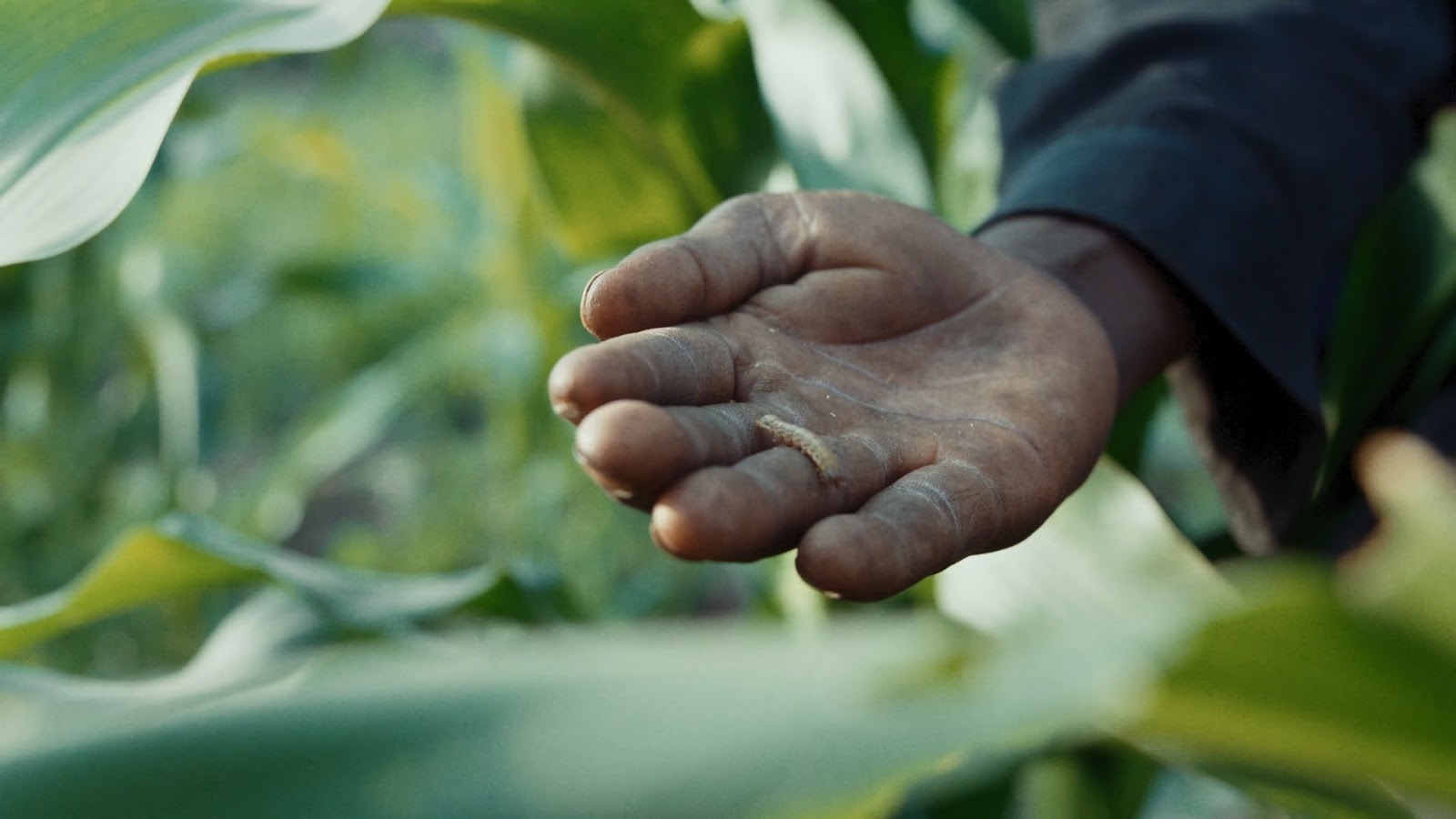 In 2016 Fall
armyworm (FAW) was first reported in Africa. It has devastated maize crops across
the continent.
In 2016 Fall
armyworm (FAW) was first reported in Africa. It has devastated maize crops across
the continent.
Research shows the potential impact of FAW on continental wide maize yield lies between 8.3 and 20.6 million tonnes per year (total expected production of 39m tonnes per year); with losses lying between US$2,48m and US$6,19m per year (of a US$11,59m annual expected value). The impact of FAW is far reaching, and is now reported in many countries around the world.
Agriculture is the backbone of Uganda’s economy, employing 70% of the population. It
contributes to half of Uganda’s export earnings and a quarter of the country’s gross domestic
product (GDP). Fall armyworm posses a great threat on our
livelihoods.
 We are a small group of like minded developers living and working in Uganda. Most of our
relatives grow maize so the impact of the worm was very close to home. We really felt like we
needed to do something about it.
We are a small group of like minded developers living and working in Uganda. Most of our
relatives grow maize so the impact of the worm was very close to home. We really felt like we
needed to do something about it.
 The vast damage and yield losses in maize production, due to FAW, got the attention of global
organizations, who are calling for innovators to help. It is the perfect time to apply machine
learning. Our goal is to build an intelligent agent to help local farmers fight this pest in
order to increase our food security.
The vast damage and yield losses in maize production, due to FAW, got the attention of global
organizations, who are calling for innovators to help. It is the perfect time to apply machine
learning. Our goal is to build an intelligent agent to help local farmers fight this pest in
order to increase our food security.
Based on a Machine Learning Crash Course, our Google Developer Group (GDG) in Mbale hosted some study jams in May 2018, alongside several other code labs. This is where we first got hands-on experience using TensorFlow, from which the foundations were laid for the Farmers Companion app. Finally, we felt as though an intelligent solution to help farmers had been conceived.
Equipped with this knowledge & belief, the team embarked on collecting training data from nearby fields. This was done using a smartphone to take images, with the help of some GDG Mbale members. With farmers miles from town, and many fields inaccessible by road (not to mention the floods), this was not as simple as we had first hoped. To inhibit us further, our smartphones were (and still are) the only hard drives we had, thus decreasing the number of images & data we can capture in a day.
But we persisted! Once gathered, the images were sorted, one at a time, and categorized. With
TensorFlow we re-trained a MobileNet,
a technique known as transfer learning. We then used the TensorFlow Converter to
generate a TensorFlow Lite FlatButter file which we deployed in
an Android app.
 We started with about 3956 images, but our dataset is growing exponentially. We are actively
collecting more and more data to improve our model’s accuracy. The improvements in TensorFlow,
with Keras high level APIs, has really made our approach to deep learning easy and enjoyable
and we are now experimenting with TensorFlow
2.0.
We started with about 3956 images, but our dataset is growing exponentially. We are actively
collecting more and more data to improve our model’s accuracy. The improvements in TensorFlow,
with Keras high level APIs, has really made our approach to deep learning easy and enjoyable
and we are now experimenting with TensorFlow
2.0.
The app is simple for the user. Once installed, the user focuses the camera through the app, on a maize crop. Then an image frame is picked and, using TensorFlow Lite, the image frame is analysed to look for Fall armyworm damage. Depending on the results from this phase, a suggestion of a possible solution is given.
The app is available for download and it is constantly undergoing updates, as we push for local farmers to adapt and use it. We strive to ensure a world with #ZeroHunger and believe technology can do a lot to help us achieve this.
We have so far been featured on a national TV station in Uganda, participated in the #hackAgainstHunger and ‘The International Symposium on Agricultural Innovations’ for family farmers, organized by the Food Agricultural Organization of the United Nations, where our solution was highlighted.
More recently, Google highlighted our work with this film:We have embarked on scaling the solution to coffee disease and cassava diseases and will slowly be moving on to more. We have also introduced virtual reality to help farmers showcase good farming practices and various training.
Our plan is to collect more data and to scale the solution to handle more pests and diseases. We are also shifting to cloud services and Firebase to improve and serve our model better despite the lack of resources. With improved hardware and greater localised understanding, there's huge scope for Machine Learning to make a difference in the fight against hunger.